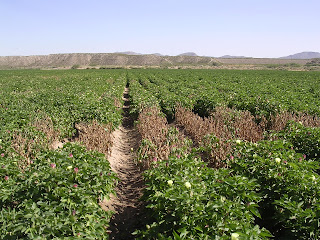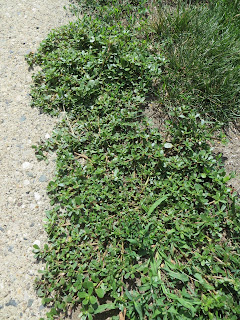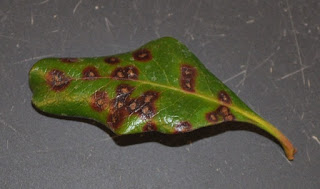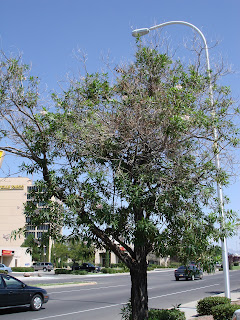 |
| Pear tree infected with Phymatotrichopsis omnivora (these two photos were taken one week apart) (Photo: NMSU-PDC) |
 |
| Characteristic cruciform (cross-shaped) hyphae of Phymatotrichopsis omnivora (Photo: NMSU-PDC) |
If you are concerned that you may have a plant with this disease, please contact your local county extension agent for assistance in submitting specimens for diagnosis.
Read on for more information on pecan diseases
 |
| New Mexico Counties were Phymatotrichum root rot has been confirmed since 1993 |
 |
| Spore mat on Phymatotrichopsis omnivora on the soil (Photo: R. B. Hine, University of Arizona) |
 |
| Phymatotrichum root rot on cotton (Photo: NMSU-PDC) |
 |
| Fungal strands of Phymatotrichopsis omnivora on a cotton root (left) and a pecan root (right) (Photos: NMSU-PDC, left; and R. B. Hine, University of Arizona, right) |
 |
| Phymatotrichum root rot on pecan trees (Photos: NMSU-PDC) |
 |
| Phymatotrichum root rot on a pistachio tree (Photo: NMSU-PDC) |
 |
| Phymatotrichum root rot on Chinese pistache (left); Close up of leaves clinging to the branches (right); Fungal strand from the roots of this tree (insert). (Photos: NMSU-PDC) |
































